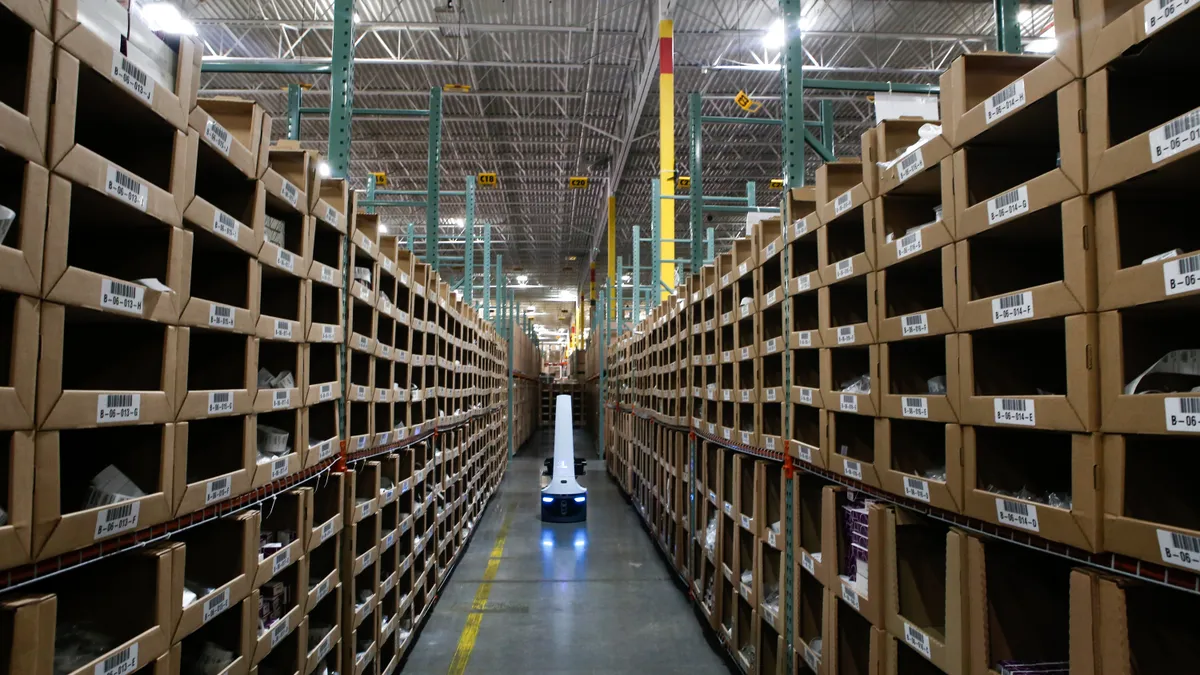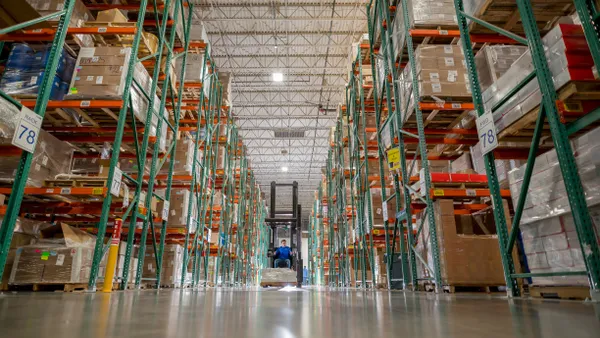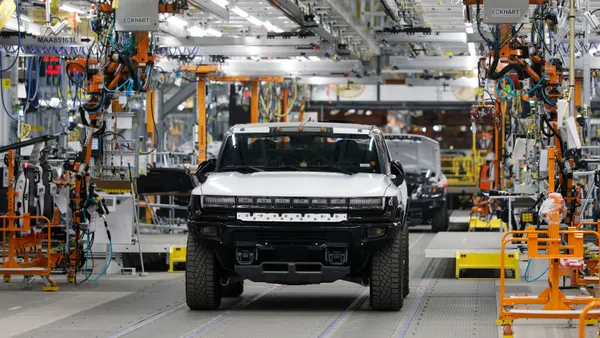Editor's Note: Readers looking to participate in the LMI are welcome, and can do so at logisticsindex.org.
Dive Brief:
- Supply is failing to meet demand raised by logistics networks, boosting prices in the warehouse and transportation markets to record highs, according to the latest Logistics Manager Index (LMI) data.
- The January/February LMI dropped 2.1% from the September to December reading, showing the industry is growing at a slower pace than previous quarters. The fall is due to a contraction in available warehouse and transportation capacity, according to the report.
- Over the next 12 months, these constraints will cause the logistics industry to grow at decreasing rates, as networks fail to reach their full potential. Meanwhile, inventory costs and levels are expected to continue rising on a YoY level.
Dive Insight:
Logistics networks operate on fundamentals, and the indicators on inventory levels, warehousing and transportation suggest the industry will continue to be strained in 2018.
While seven of the eight components of the LMI expanded in the latest period, the index's projections are less optimistic. Demand, as shown by the rising trend in inventory levels, costs and warehouse utilization remains sky high. But supply is struggling to keep up.
"A decrease in the supply of available Warehouse and Transportation Capacity appears to be driving up price, potentially placing some financial strain on logistics networks," writes Colorado State University's Zac Rogers in the LMI report. A high warehouse and transport utilization, despite rising inventory, suggests prices will continue to tick up.

"The predicted Warehousing Prices index is 74.7, indicating inventory levels are expected to continue to increase at a strong rate over the next year," Rogers wrote. "Whether this is due to a limited supply of warehousing, or distribution moving ever-closer to consumers, and therefore into more expensive areas, is unclear."
The LMI is only in its third year of production, but the historical trends it reports are beginning to show supply chains are feeling a sort of growing pain.
"Every reading since the beginning of this project in September of 2016 has indicated growth in the logistics industry," according to the report. "The growth is seemingly buoyed by high prices for whatever logistics and distribution space is still available."
The index seeks to track the changes in the logistics industry through a monthly survey of director-level or above respondents who are members of the Council of Supply Chain Management Professionals association. The dataset mirrors the storied purchasing managers' index, which is renowned as a major economic indicator.
"While the researchers feel strongly that warehousing, transportation, and inventory trends are key economic indicators, the exact relationship between the LMI and the overall economy as indicated by GDP has yet to be established empirically," Rogers notes.















